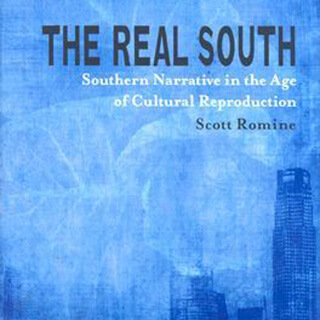Overview
George Philip LeBourdais discusses the work of painter and photographer William Bradford who explored the Arctic in 1869 and subsequently published his account of the journey in The Arctic Regions in 1873.
During the spring semester of 2016, Emory University’s "MAP IT | Little Dots, Big Ideas" series featured lectures by humanists at different stages of their careers who are engaged in cutting-edge digital mapping projects. This lecture also appears in the "Digital Spaces" series, an ongoing collection of interdisciplinary, multimedia projects that deploy digital scholarship in the study of real and imagined geographies.
Presentation
Question and Answer Session
About the Speaker
George Philip LeBourdais is a PhD candidate in the Department of Art and Art History at Stanford University. His research explores the representation of extreme landscapes—such as alpine and arctic regions—and the political forces that shape and contest them over time. His published writing explores these themes within the history of photography.
Cover Image Attribution:
The header image is a screenshot from LeBourdais's presentation. Screenshot by Southern Spaces, June 22, 2016.Recommended Resources
Text
Carruth, Allison and Robert P. Marzec, eds. “Environmental Visualization in the Anthropocene: Technologies, Aesthetics, Ethics.” Special issue, Public Culture 26, No. 2 (2014).
Condon, Richard G. “The History and Development of Arctic Photography.” Arctic Anthropology 26, no. 1 (1989): 46–87.
Cosgrove, Denis. “Cultural Cartography: Maps and Mapping in Cultural Geography.” Annales de Géographie 117, no. 660 (2008): 159–178.
Gregory, Ian. “Exploiting Time and Space: A Challenge for GIS in the Digital Humanities.” In The Spatial Humanities: GIS and the Future of Humanities Scholarship, edited by David J. Bodenhamer, John Corrigan, and Trevor M. Harris, 58–75. Bloomington: Indiana University Press, 2010.
Kelsey, Robin Earle. Archive Style: Photographs & Illustrations for U.S. Surveys, 1850–1890. Berkeley: University of California Press, 2007.
Miller, Angela. The Empire of the Eye: Landscape Representation and American Cultural Politics, 1825–1875. Ithaca, NY: Cornell University Press, 1993.
Potter, Russell Alan. Arctic Spectacles: The Frozen North in Visual Culture, 1818–1875. Seattle: University of Washington Press, 2007.
Roberts, Jennifer L. Transporting Visions: The Movement of Images in Early America. Berkeley: University of California Press, 2014.
Trefzer, Annette, Jeffrey T. Jackson, Kathryn McKee, and Kirsten Dellinger. “The Global South and/in the Global North: Interdisciplinary Investigations.” The Global South 8, no. 2 (2014): 1–15.
Wall, Jeff. “Photography and Liquid Intelligence.” Jeff Wall: Selected Essays and Interviews. New York: Museum of Modern Art (2007): 109–110.
Wilmerding, John, ed. American Light: The Luminist Movement, 1850–1875. Washington, D.C.: National Gallery of Art, 1980.
Wilton, Andrew and Tim Barringer. American Sublime: Landscape Painting in the United States 1820–1880. Princeton, NJ: Princeton University Press, 2002.
Web
Arctic Diary: Paintings and Photographs by William Bradford. Sterling and Francine Clark Art Institute, 2002. http://www.clarkart.edu/exhibitions/bradford/content.cfm?id=1
Bauch, Nicholas. Enchanting the Desert. Spatial History Project: Stanford University. 2016. https://web.stanford.edu/group/spatialhistory/static/projects/project1061.html
Coppelman, Alyssa. “Then and Now Come Together at the Grand Canyon.” Slate. November 30, 2012. http://www.slate.com/blogs/behold/2012/11/30/mark_klett_and_byron_wolfe_grand_canyon_images_then_and_now_photos.html.
Stanford Center for Spatial and Textual Analysis. Stanford University. https://cesta.stanford.edu/.
Viatimages. University of Lausanne. http://www2.unil.ch/viatimages/index.php?lang=en&.



